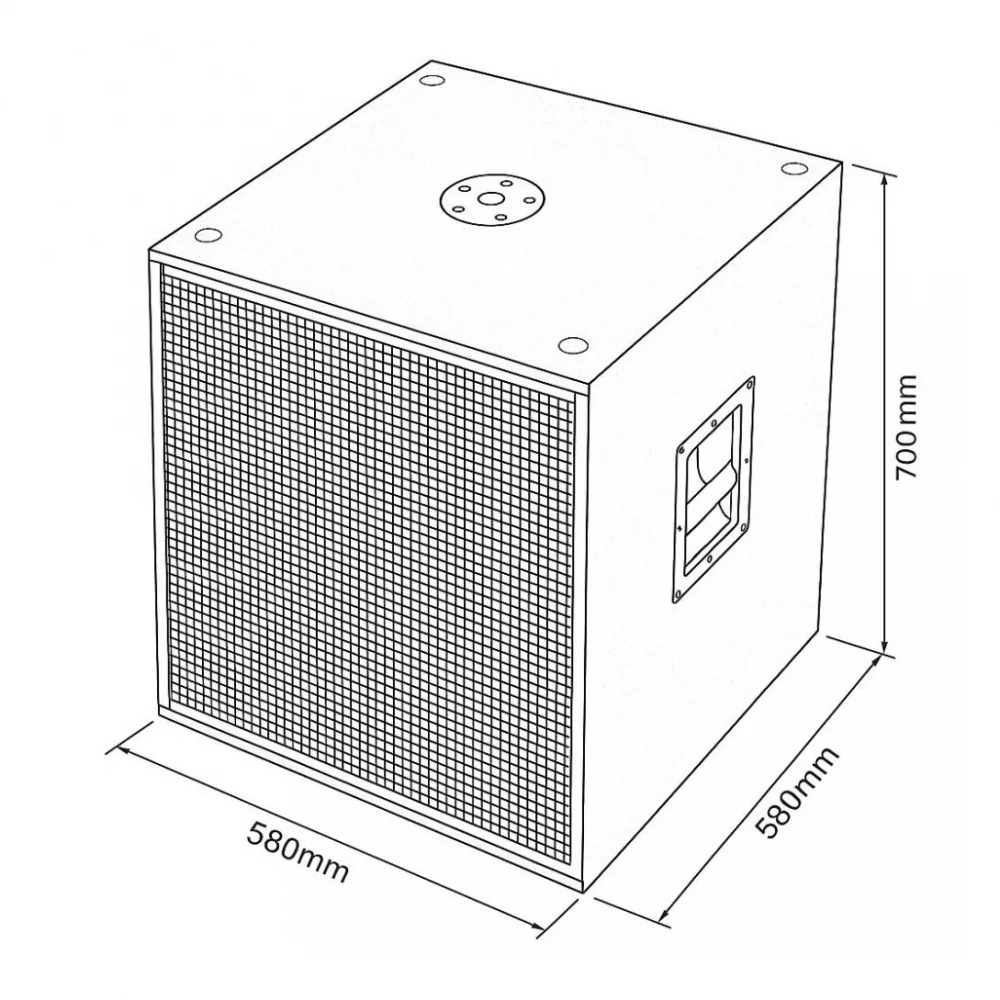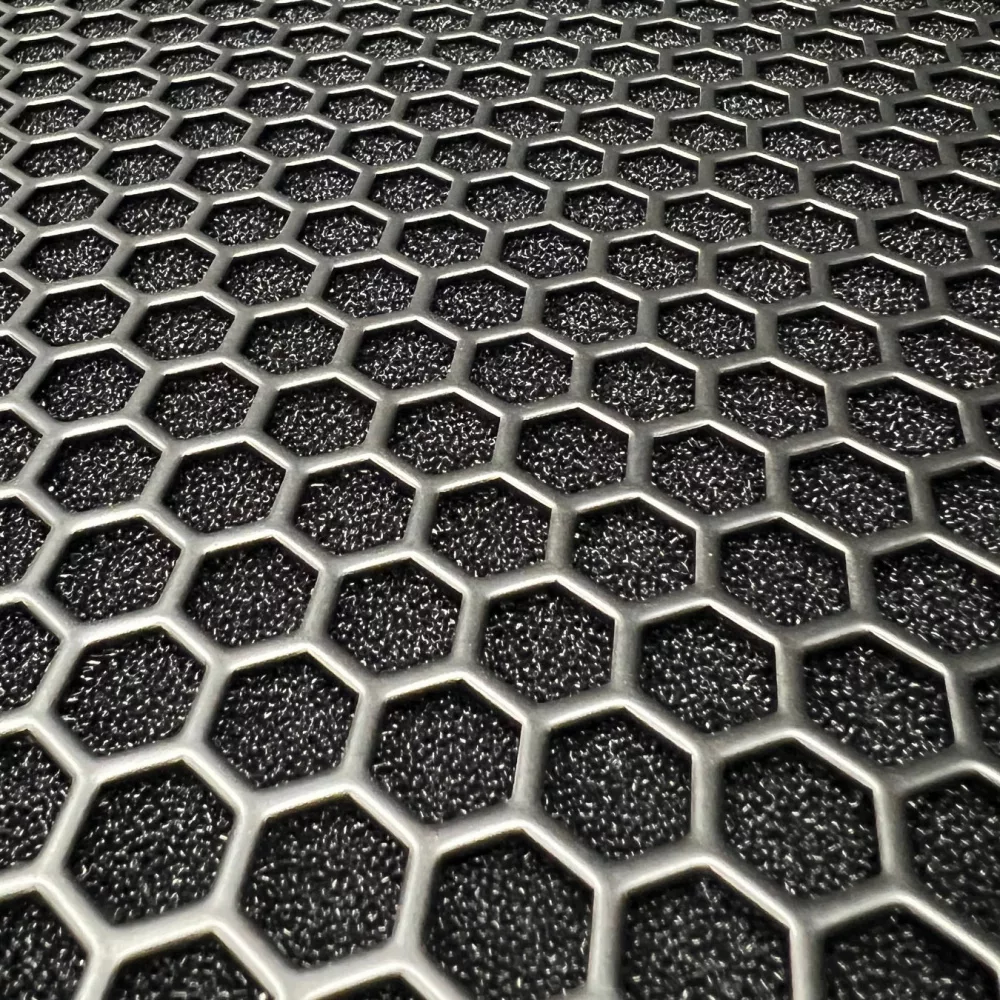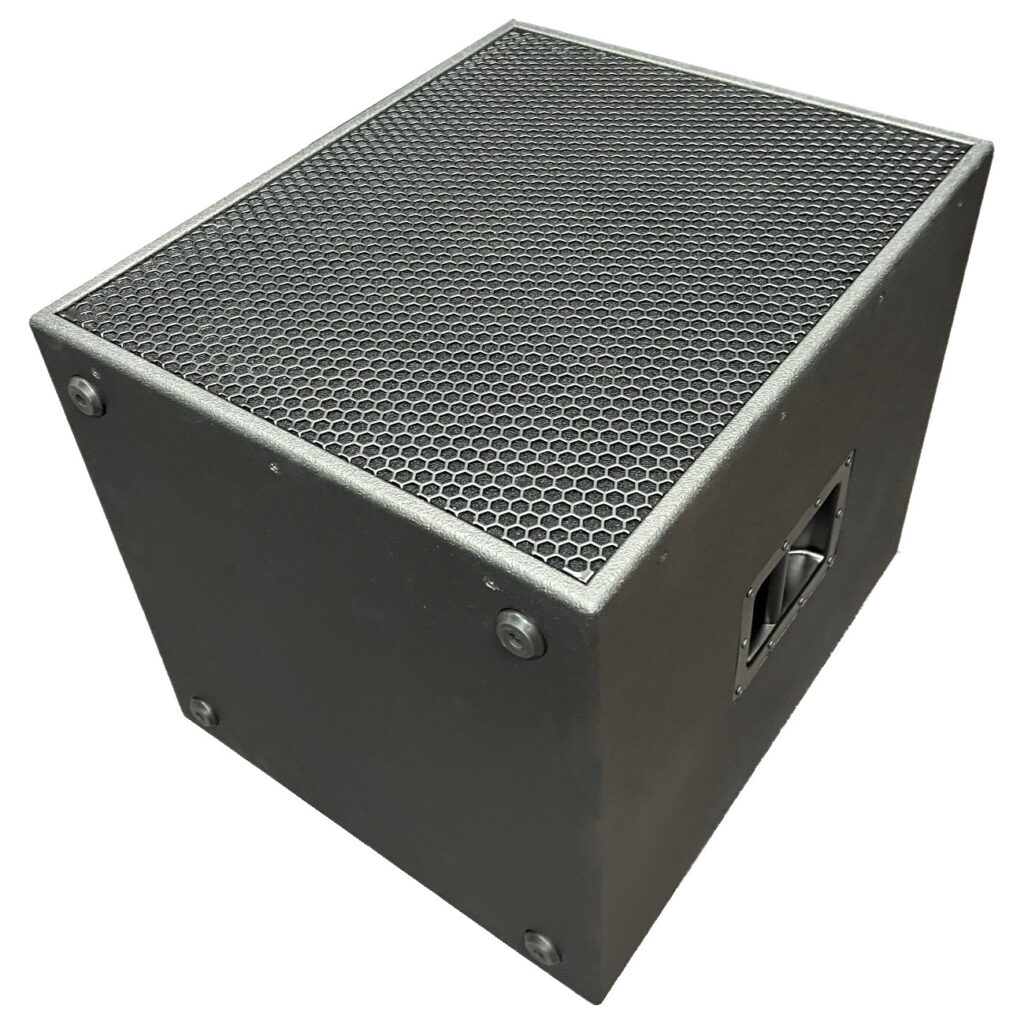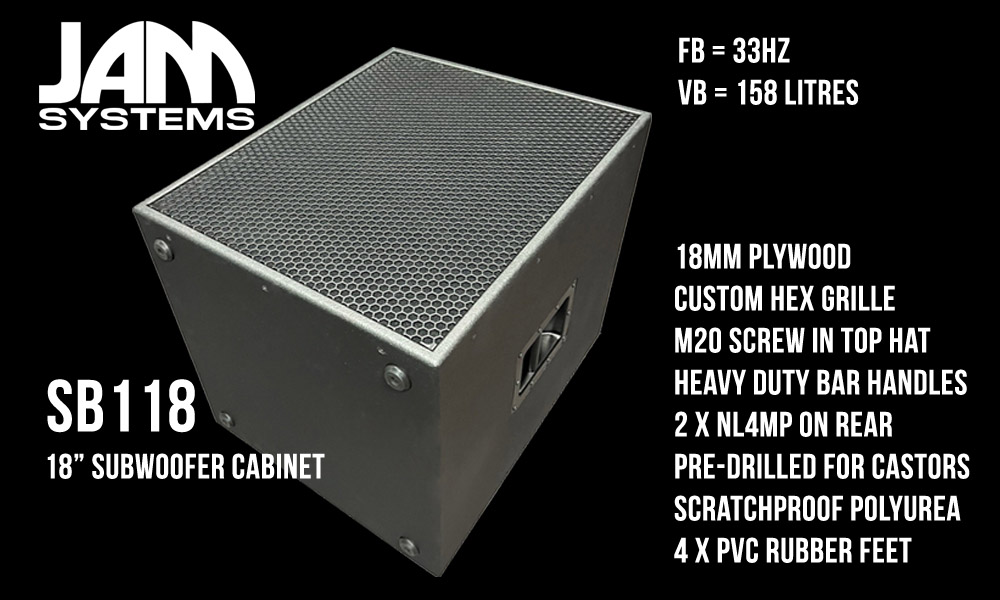As part of our testing and development we identified a selection of woofers that are all suitable for bass reflex cabinets of approximately this size and tuning. To some extent, we were targeting the 18TBW100, and aiming for deep bass around 30Hz in the design process, so we were expecting good results from this driver. Equally, we were expecting the other drivers to perform well also.
All of the drivers performed well, there weren’t any with poor results, but we had filtered out a set of drivers that we had either previously used or identified were good in this application, so no surprises here really.
All the drivers had at least 2 hour burn-in in free air, with a 27Hz signal and good excursion. The purpose here is to loosen up the drivers suspensions so it performs as specified in the manufacturers published T/S parameter (or within tolerance at the very minimum)
We used the same cabinet, the same test conditions, and just swapped out drivers in sequence to test. Unfortunately our testing environment was inside, in a room that exhibits a certain amount of destructive interference between 40 and 50Hz, which causes a bit of a lull in the response graph. This is simply due to reflections off the walls, floor and ceiling coupling together in the middle of the room and partially cancelling each other out.
So which is the correct/best driver? All of them…
… depending on what you want to achieve, your budget, and other factors.
The first thing we want to make clear at the outset is that these tests don’t necessarily make one driver better than another, and they are not conclusive in any way. This is a small signal test conducted with a Clio measurement system, and is ‘approximately’ 1W/1m – we didn’t take the time to calibrate and check everything, as the main intent here was to measure the results of the drivers relative to each other, rather than trying to provide a report to publish with specific numbers.
A Small signal test at 1W/1m will not take into consideration:
a) Xmax/Xlim excursion limits
b) Distortion at high power
c) Power Compression
d) Longevity/Reliability
The above 4 factors are all important in choosing the ‘best’ driver, this test was purely an SPL test to check performance at low frequencies in our SB118 cabinet. In a different cabinet, its possible the results could be different, so NOTHING in this test conclusively proves anything. Its purely research for comparison. Having said that, we were very impressed with the results from the 18TBW100.
So here are the measured SPL results of ALL the drivers, you can see they mostly follow a very similar pattern – the peaks and troughs are primarily room resonances and constructive/destructive summation of sound within the room. What we are concerned with is the differences between them at different frequencies, in some cases the differences are quite noticeable.
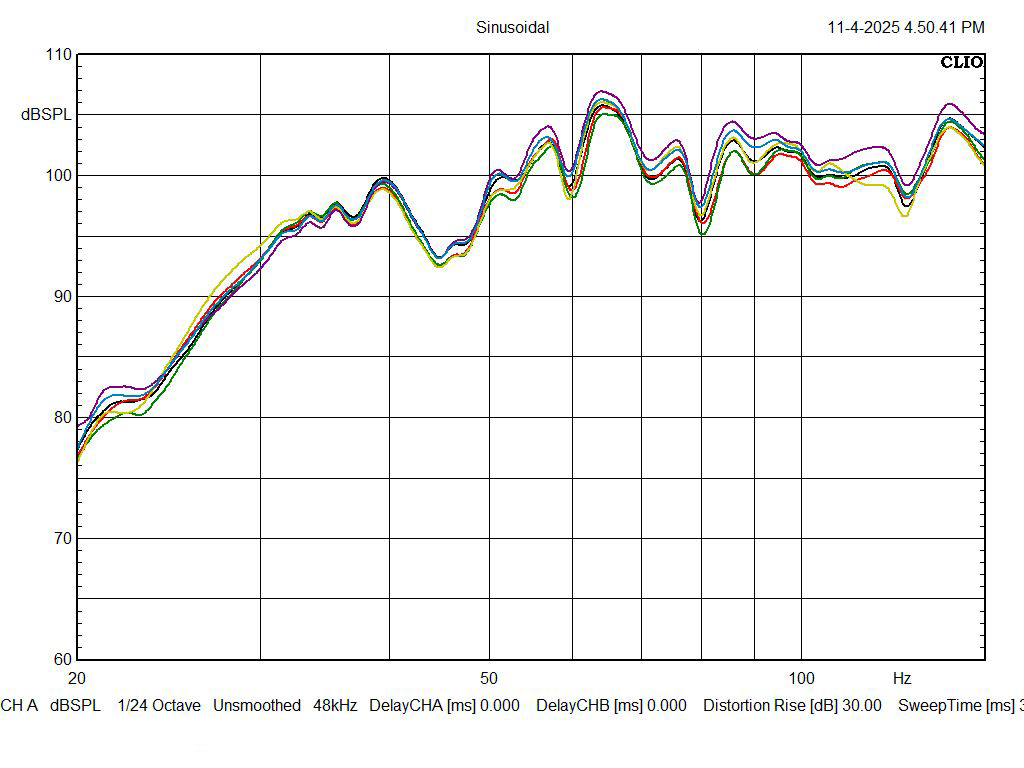
Red: Faital Pro 18XL1600 | Green: Lavoce SAF184.03 | Yellow: B&C 18TBW100 | Orange: RCF LF18X401 | Purple: Beyma 18Lex1200Fe | Light Blue: B&C 18TBX100 | Grey: Fane Colossus Prime 18XS
The graph above is a little cluttered, but you can just about distinguish most of the different plots, and it should be pretty obvious to see that some have a better response around 30-35Hz, but are less efficient between 50-100Hz, the drivers that are more efficient 50-100Hz and louder, tend to be less efficient at 30-35Hz. This is the standard/common trade off in almost all woofers. If you design a woofer to operate at its best around 30-35Hz, you have a lower Fs, generally a heavier cone, and almost always less efficiency in upper bass. If you design a woofer to have maximum efficiency, the cone is usually a little lighter (less energy needed to move a lighter cone) but the Fs is a little higher and it doesn’t hit those really deep notes as hard.
So what do you choose? If you’re primarily playing EDM , and want trouser leg flapping bass and want to make the earth move, and have plenty of amp power. Choose a woofer that has a better response down at 30Hz. If you’re playing live music, heavy with kick drum, but not so bothered about super deep synthesized bass notes, it does make sense to get the most efficient woofer between 45-80hz – you’ll need less amp power to make the noise you want, and your maximum SPL will be higher. An efficient woofer like this will sound ‘louder’ than the heavy woofer, but it wont go as low. If you’re not sure, and want a bit of both, you might choose a woofer that is somewhere between, and has just the right balance of deep grunt at 30Hz, and punch up at 50-80Hz.
This is why I say all of the drivers are correct and ‘the best’- they each offer a different combination of tonality, performance and price.
So lets look a little closer:
Yellow is B&C 18TBW100, Purple is Beyma 18Lex1200Fe, Blue is B&C 18TBX100. Very ‘roughly’ the 18TBW100 gives the best low performance at 30hz, the 18Lex1200Fe gives he best performance from 50-100Hz and the 18TBX100 is somewhere in between. The Fane Colossus Prime 18XS was so similar to the 18TBX100 that the plots were virtually indistinguishable, with differences of 0.25dB between the two.
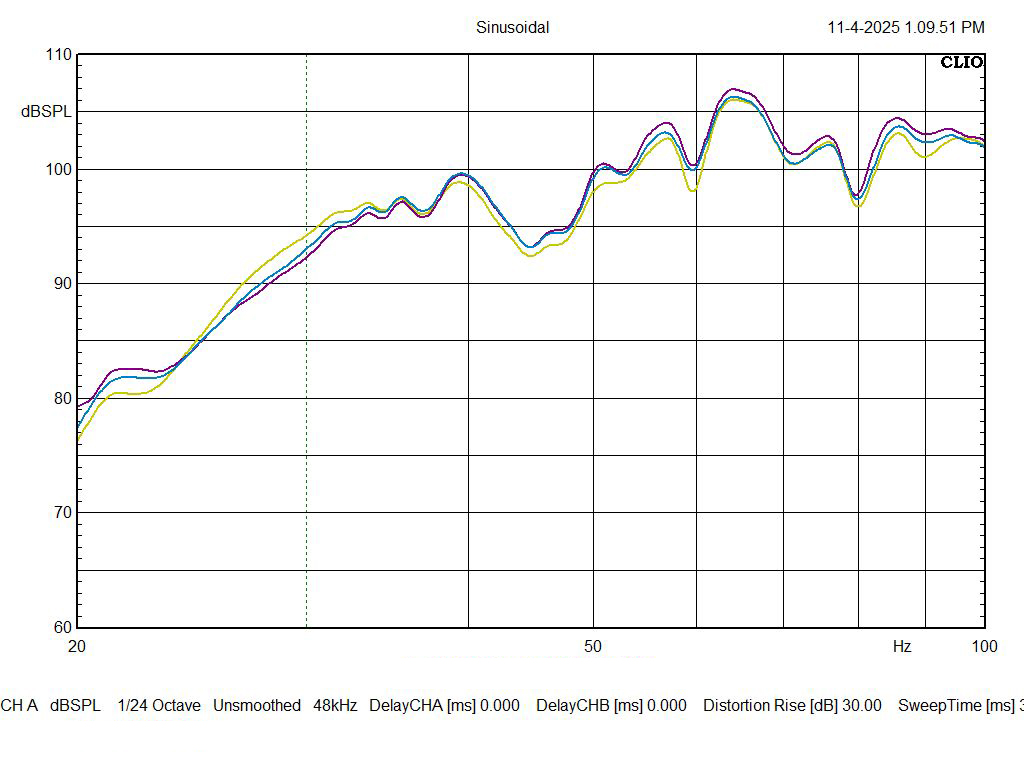
To help understand the significance, some numbers/maths will help.
At 30Hz there is approximately 2 – 2.5dB difference between the 18Lex1200Fe and the 18TBW100. For the sake of simplicity, let’s call it 2dB.
Based on the above measurements (which may not be calibrated) to reach 120dB, the 18TBW100 would require around 400W from the amplifier, to reach the same volume, the 18Lex1200Fe would need 630W, almost 50% more power from the amp.
Theoretical max SPL at 30Hz for the 18TBW100, assuming 1500W AES, and 6000W peak (if you have an amp big enough) would be 131.8dB – although realistically this would be dumb as you will probably exceed the excursion limits.
For the Beyma 18Lex1200Fe, 1200W AES, 4800W Peak, you could still reach a healthy 128.8dB, but thats a fairly solid 3dB less.
The opposite is true between 60 and 80Hz, the 18TBW100 would need approximately 50% more power to achieve the same SPL at the Beyma 18Lex1200Fe.
So at the 2 extremes of the drivers we tested, they virtually mirror each other in terms of the extra power needed to to achieve a certain SPL at a certain frequency.
Some more comparative graphs: Blue = 18TBX100 Grey = Colossus Prime 18XS

Green: Lavoce SAF184.03 Orange: RCF LF18X401

Blue: B&C 18TBX100 Purple: Beyma 18Lex1200Fe
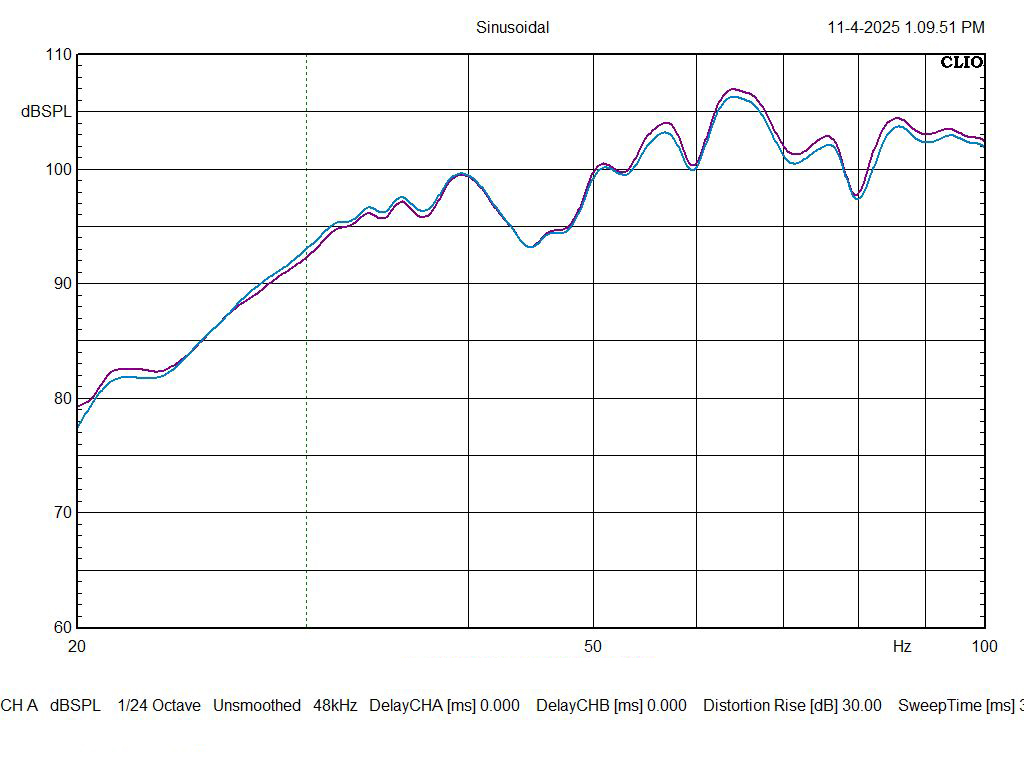
All the drivers offer great sound, just with slightly differing emphasis in different parts of the audio spectrum.
What we didn’t test (and realistically cant easily) – is How all these drivers behave at maximum power. Things can change as you ramp the power up, particularly when power compression comes into play. We also didn’t test how things change over time. With use, the suspension, spider and cone soften a little, and change the drivers performance. All of the above drivers were new, with around 2 hours of burn-in – they could all still be a little ‘stiff’ and require more time to reach peak performance.
Next experiment is to pick some drivers we don’t expect to work well in this cabinet, for example drivers with a very high Qts more suited to large wardrobes, or low Qts that are more suited to horn loading. We’ll save that for another rainy day.
